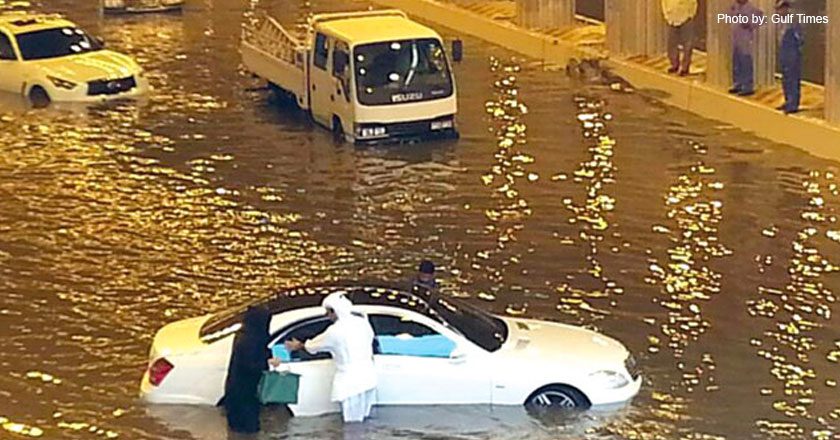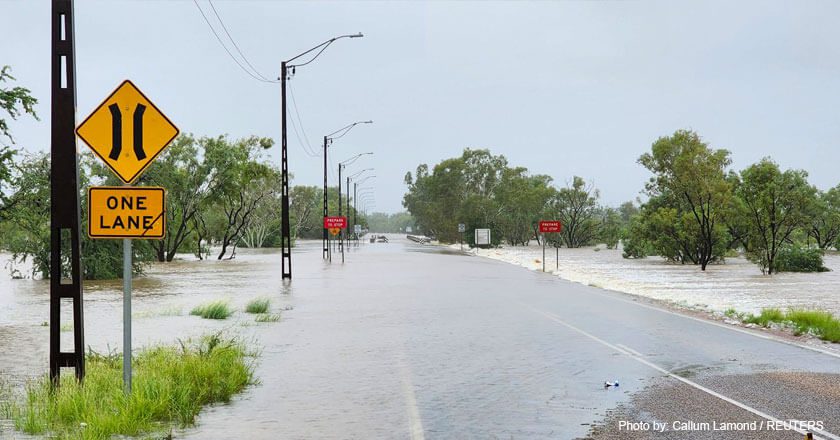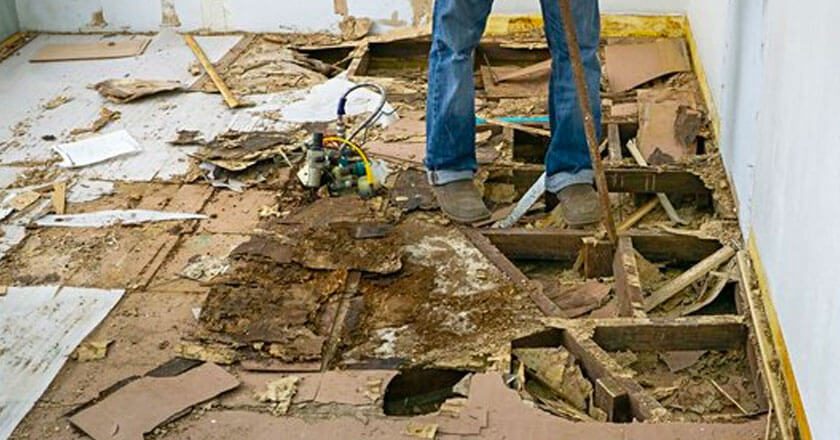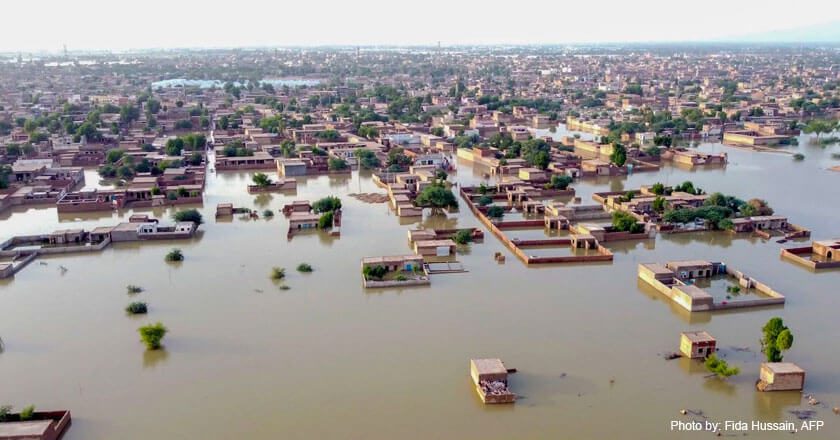7 Myths about Flooding that 9 of 10 people still believe
February 9, 2023 | Created by: Andreas Klippe | Comments
Flooding is a serious and potentially deadly natural disaster that can happen anywhere, at any time. Unfortunately, there are many misconceptions and myths about flooding that can put people at risk. From misconceptions about flood insurance to the dangers of driving through floodwaters, it’s important to understand the truth about flooding so you can be prepared to protect yourself and your property.
In this blog post, we’ll be discussing 7 common myths about flooding that 9 out of 10 people still believe. We’ll explore the facts behind these myths and provide valuable information on how to stay safe and protect your property during a flood.
Myth #1: Floods only happen in low-lying areas.
This is a common misconception that many people still believe, but the truth is that floods can happen anywhere, regardless of elevation. Floods can be caused by a variety of factors, including heavy rainfall, snowmelt, and even a broken dam.
Urbanization and poorly designed drainage systems can also contribute to the likelihood of flooding. As cities and towns grow, natural areas that once absorbed water are paved over and replaced with buildings and roads. This means that rainwater has nowhere to go, and can quickly lead to flooding. Additionally, older drainage systems may no longer be sufficient to handle the increased population and utilities in the area.

It is important to understand that just because an area is not typically considered a “flood zone” does not mean that it is immune to flooding. You should always be aware of the potential for flooding in your area, to stay informed about weather conditions, and to take steps to protect yourself and your property.
Myth #2: Floodwaters do not have as much pressure as rivers or oceans.
This common misconception can lead to severe damage to homes and buildings. Floodwaters can have a significant amount of pressure, which can cause damage to the foundations, floors, and walls of buildings. This is due to the fact that a large amount of water is being forced into a smaller area, creating a concentrated pressure.
As I have explained on my previous blog “The Real Flood Threat: How Water Pressure Do More Harm Than Termites”, Floodwaters can cause serious damage to homes and buildings, undermining foundations, breaking floors, and eroding walls. This can lead to costly repairs and even render the building uninhabitable. It’s important to remember that just because the water may not look deep or fast-moving, it still can have a powerful force behind it, and should be treated with caution.
It is important to note that this is just one of the many misconceptions about flooding.
Myth #3: Flood insurance will cover all my flood damages.
This is a common misconception that can lead to financial hardship if a flood occurs. Flood insurance is designed to help cover the costs of flood damage to your property, but it does not cover all damages. Most standard homeowners insurance policies do not cover flood damage, so if you want to be covered for flood damage, you will need to purchase a separate flood insurance policy.
Even with a flood insurance policy, there may be limits on the amount of coverage you can receive, and there may be certain types of damage that are not covered. For example, flood insurance policies may not cover damages to personal property, such as furniture and electronics, or may have limits on the amount of coverage available for these items.
It is important to understand the limits of your flood insurance policy, and to purchase enough coverage to protect your property in case of a flood. But this will be much more expensive that your regular insurance policy.
Additionally, filing a claim with the insurance company can be a hassle and time-consuming process, as you need to provide a lot of documentation, such as photos and receipts, to prove the damage.
Myth #4: The government will take care of everything if a flood occurs.
This misconception can give a false sense of security and put people at risk. While the government may offer some form of aid in the event of a flood, it is not guaranteed and may not fully cover the cost of damages.
It’s crucial to understand that the government’s resources are limited and may not be able to provide all the assistance required in case of a major flood. In Addition, the process of obtaining aid from the government can be time-consuming and challenging.
Investing in your own flood protection, such as using flood barrier technologies or improving the design of homes, can greatly reduce the impact of a flood on your property. Having a plan in place, being prepared financially to handle the costs of a flood, including the cost of temporary housing, food, and other expenses, and having a flood insurance policy to help cover the cost of damages that may not be covered by government aid will also be beneficial.
Myth #5: It is safe to drive or walk through floodwaters.
This is a dangerous misconception that can lead to severe injury or death. Floodwaters can contain hidden dangers such as sharp objects, electrical hazards, and strong currents. Additionally, the water can be deeper and more powerful than it appears, making it easy to lose control of a vehicle or be swept away by the current. Floodwaters can also contain harmful contaminants and bacteria, making it dangerous to come into contact with the water.

It is important to avoid driving or walking through floodwaters at all costs. Instead, you should turn around and find an alternate route. If you are driving and your car stalls in a flooded area, leave the car immediately and seek higher ground. Never attempt to walk, swim, or drive through floodwaters.
It’s also important to note that even if the floodwaters appear to be shallow, it’s not always safe to cross. The road or bridge may have been washed out or damaged and can collapse under the weight of a vehicle. Also, if the water is moving rapidly, it can easily sweep a car or person away, leaving them at the mercy of the current.
Myth #6: A sump pump will protect my home from flooding.
This is a very common misconception that can lead to a false sense of security. A sump pump is a device that is installed in the lowest point of a basement or crawlspace to pump out excess water that has accumulated in that area. While a sump pump can be an effective tool for preventing basement flooding, it is not a solution for all flooding problems.
It’s important to understand that a sump pump only protects the area where it is installed and does not protect the entire home from flooding. If a severe storm or heavy rainfall causes water to enter your home through the walls, windows or doorways, a sump pump will not be able to remove that water. Additionally, a power outage can render a sump pump useless, leaving the home vulnerable to flooding.
Furthermore, a sump pump also requires regular maintenance and testing to ensure it is functioning properly. It is important to regularly check the sump pump’s discharge line to ensure it is clear and not blocked. Also, make sure the sump pump’s battery backup is charged and working in case of power outages.
In conclusion, while a sump pump can be an effective tool for preventing basement flooding, it is not a solution for all flooding problems. It’s essential to protect your home from flooding through other means, such as installing flood barriers, elevating electrical systems, and ensuring proper drainage systems are in place. Also, it’s important to have a backup plan in case of power outages.
Myth #7: Flooding only happens during storms.
Flooding can happen for many reasons, and not only during storms. Some of the other causes of flooding include:
- Melting snow and ice, which can cause water to overflow from rivers and streams.
- Heavy rainfall, which can cause water to accumulate in low-lying areas.
- Coastal flooding, which can be caused by high tide and storm surges.
- Human-made causes such as broken dams or levees, or the failure of drainage systems.

It’s important to understand that flooding can happen at any time and can be caused by a variety of factors. Therefore, it’s essential to be prepared for the possibility of flooding, regardless of the time of year or the weather conditions.
Additionally, floods can happen gradually or suddenly. Gradual floods happen when water gradually rises over time, while sudden floods happen when the water rises quickly, such as during flash floods. Both types of floods can cause significant damage to homes, businesses, and most essentially, critical infrastructures.
Closing the Book on Flood Myths: The Importance of Preparedness
In conclusion, it’s crucial for people to be aware of the common myths surrounding flooding and not to believe them. The reality is that flooding can happen in any area, at any time and for various reasons.
It’s essential to be prepared for the possibility of flooding and to take the necessary precautions to protect your home and property. Investing in your own flood protection, such as installing flood barrier technology, can save you a lot in terms of flood damages.
It is important to remember that flood does not only happen in low-lying areas, and flood insurance may not cover all damages. It is also important to understand that the government may not be able to take care of everything in case of a flood. People should be aware that driving or walking through floodwaters is dangerous, and a sump pump may not be enough to protect a home from flooding. Flooding can happen for many reasons, not just during storms.

It is important for people to be proactive and take responsibility for their own flood protection. Remember, don’t leave it to chance; take action now. If you have any further questions or concerns, don’t hesitate to contact the Flood Experts. They will be more than happy to help you protect your home and property from flooding.






